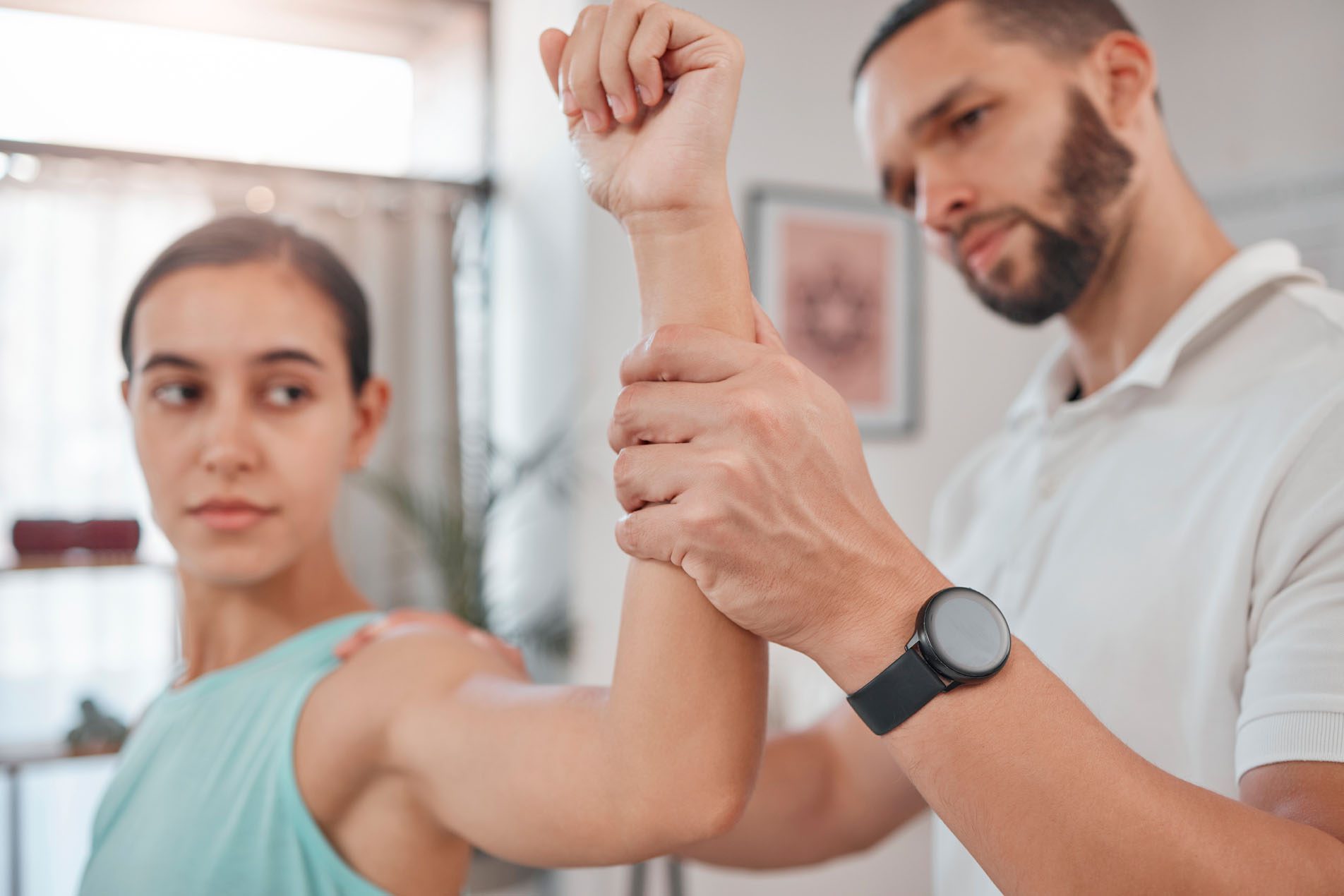Mobility Impact, Injury Recovery, and Flexibility Issues in MVA Collisions

Understanding How Motor Vehicle Accidents Impact Mobility and Flexibility
Introduction
Motor vehicle accidents (MVAs) are a significant public health concern, affecting millions of people each year. In the United States, over three million individuals sustain injuries from MVAs annually, with many experiencing long-lasting effects on their mobility and flexibility (Novus Spine & Pain Center, 2025). In Texas alone, nearly 300,000 car accidents occur yearly, often resulting in injuries that impair daily activities (Jimenez, 2018). These injuries, ranging from soft tissue damage to severe spinal trauma, can cause pain, stiffness, and reduced range of motion, significantly impacting quality of life. This article examines the mechanisms by which MVAs lead to mobility and flexibility issues, the types of injuries involved, their long-term consequences, and effective treatment options. Additionally, we highlight the expertise of Dr. Alexander Jimenez, a renowned chiropractor and nurse practitioner in El Paso, Texas, who specializes in treating MVA victims and supporting their recovery and legal needs.
References
- Jimenez, A. (2018, April 12). Car Accident Specialist In El Paso, TX. Dr. Alex Jimenez, DC, El Paso, TX Chiropractor. https://dralexjimenez.com/car-accident-specialist-el-paso-tx/
- Novus Spine & Pain Center. (2025, March 19). Motor Vehicle Injuries & Types of Pain Following an Accident. https://novusspinecenter.com/pain-conditions/motor-vehicle-injuries-types-pain-following-accident
Common Injuries from Motor Vehicle Accidents
MVAs can result in a wide range of injuries, each with unique effects on mobility and flexibility. Below, we discuss the most common types, including soft tissue injuries, spinal injuries, joint damage, head and brain injuries, and psychological trauma.
Soft Tissue Injuries
Soft tissue injuries, such as whiplash, are among the most frequent outcomes of MVAs. Whiplash occurs when the head is rapidly jerked forward and backward, straining the neck’s muscles and ligaments. This can lead to neck pain, muscle tightness, headaches, and difficulty turning the head, significantly limiting mobility (Jimenez, 2018). Approximately half of whiplash victims experience neck pain for at least one year post-accident, highlighting its long-term impact. Other soft tissue injuries, like sprains and strains to the back or shoulders, cause swelling and pain, further restricting movement (Catalyst Physical Therapy, n.d.).
References
- Catalyst Physical Therapy. (n.d.). Motor Vehicle Accident Injuries. https://catalystpt.org/pain-conditions/motor-vehicle-accident-injuries/
- Jimenez, A. (2018, April 12). Car Accident Specialist In El Paso, TX. Dr. Alex Jimenez, DC, El Paso, TX Chiropractor. https://dralexjimenez.com/car-accident-specialist-el-paso-tx/
Spinal Injuries
Spinal injuries are a major concern in MVAs, accounting for nearly half of all spine-related injuries (Jimenez, 2018). The spine’s delicate structure is vulnerable to high-impact collisions, which can cause herniated discs, vertebral fractures, or spinal cord damage. A herniated disc occurs when an intervertebral disc is pushed out of its normal position, compressing nerves and causing pain, numbness, or weakness in the limbs (Cox Law Firm, n.d.). Severe spinal cord injuries may result in partial or complete paralysis, drastically reducing mobility. Videofluoroscopy studies have shown high diagnostic accuracy for detecting vertebral instability in chronic post-whiplash pain, underscoring the prevalence of spinal issues after MVAs (MDPI, 2020).
References
- Cox Law Firm. (n.d.). How to Adapt to Mobility Loss. https://www.coxcoxfilo.com/blog/how-to-adapt-to-mobility-loss/
- Jimenez, A. (2018, April 12). Car Accident Specialist In El Paso, TX. Dr. Alex Jimenez, DC, El Paso, TX Chiropractor. https://dralexjimenez.com/car-accident-specialist-el-paso-tx/
- MDPI. (2020). Supplementary Materials: Videofluoroscopy Study. http://www.mdpi.com/1660-4601/17/5/1693/s1
Joint Damage
Joint injuries, such as those to the knees, shoulders, or wrists, are common in MVAs due to the body’s impact against vehicle components. Knee injuries, ranging from bruises to meniscus tears, can limit walking and bending (Kraft Law, 2024). Shoulder injuries often occur when drivers brace against the steering wheel, locking the joint and reducing flexibility. These injuries may lead to chronic conditions, such as osteoarthritis, which causes joint stiffness and pain over time. (Sage Hill Physiotherapy, n.d.).
References
- Kraft Law. (2024, June 5). Common Injuries Resulting From Car Accidents. https://www.kraftlaw.com/car-accidents/common-injuries-car-accidents/
- Sage Hill Physiotherapy. (n.d.). Motor Vehicle Accident Recovery. https://www.sagehillphysio.com/blog/Motor-Vehicle-Accident-Recovery
Head and Brain Injuries
Head injuries, including concussions, can affect physical function by causing dizziness, balance issues, and headaches. Concussions result from the brain’s impact against the skull during a crash, leading to symptoms that impair mobility (Catalyst Physical Therapy, n.d.). These injuries may require rehabilitation to restore coordination and strength, as untreated concussions can prolong recovery.
References
- Catalyst Physical Therapy. (n.d.). Motor Vehicle Accident Injuries. https://catalystpt.org/pain-conditions/motor-vehicle-accident-injuries/
Psychological Trauma
Psychological trauma following an MVA, such as anxiety or post-traumatic stress disorder (PTSD), can indirectly affect mobility. Victims may avoid physical activity due to fear of reinjury or experience depression, reducing their willingness to engage in rehabilitation (Michigan Auto Law, 2025). This emotional response can exacerbate physical limitations, creating a cycle of reduced mobility and further impairing physical function.
References
- Michigan Auto Law. (2025, March 31). Trauma After Car Accident. https://www.michiganautolaw.com/blog/2025/03/31/trauma-after-car-accident/
Long-Term Effects and Chronic Conditions
MVA injuries can lead to chronic conditions that persist for years. Persistent pain from untreated injuries, such as whiplash or herniated discs, may affect areas like the neck, back, or limbs (Simply PT, n.d.). Joint injuries can progress to osteoarthritis, resulting in stiffness and a reduced range of motion. (Kitchel Law, n.d.). Spinal injuries may result in chronic pain or permanent mobility loss, with some requiring long-term care (LM Law, 2024). The progression of musculoskeletal joint pain is often linked to initial trauma, which reinforces the importance of early intervention.
| Condition | Cause | Impact on Mobility/Flexibility |
|---|---|---|
| Chronic Neck Pain | Whiplash | Limits head movement, causes stiffness |
| Osteoarthritis | Joint trauma | Reduces joint flexibility, causes pain |
| Chronic Back Pain | Herniated discs | Restricts bending, lifting, and walking |
| Paralysis | Spinal cord injury | Severe loss of mobility, may require mobility aids |
References
- Kitchel Law. (n.d.). Long-Term Effect of Car Accident Injuries. https://www.kitchellaw.com/blog/long-term-effect-car-accident-injuries.cfm
- LM Law. (2024, January). Immobility Caused by Car Accidents. https://www.lmlawnyc.com/blog/2024/01/immobility-caused-by-car-accidents/
- Simply PT. (n.d.). Hidden Injuries From Car Accidents. https://simplypt.com/hidden-injuries-from-car-accidents-why-you-shouldnt-skip-physical-therapy/
Treatment and Rehabilitation
Early intervention is crucial for restoring mobility and flexibility after a motor vehicle accident (MVA). Physical therapy reduces pain, improves strength, and enhances flexibility through techniques like massage, exercises, and manual manipulation (Catalyst Physical Therapy, n.d.). Chiropractic care, including spinal adjustments, helps realign the spine and restore normal movement patterns. (Wall Family Chiropractic, 2024). Other treatments, such as acupuncture and nutrition counseling, may support recovery (Wellness for Warriors CT, n.d.).
References
- Catalyst Physical Therapy. (n.d.). Motor Vehicle Accident Injuries. https://catalystpt.org/pain-conditions/motor-vehicle-accident-injuries/
- Wall Family Chiropractic. (2024, October 30). Restoring Mobility and Range of Motion After a Car Crash. https://wallfamilychiropractic.com/2024/10/30/restoring-mobility-and-range-of-motion-after-a-car-crash/
- Wellness for Warriors CT. (n.d.). Motor Vehicle Accidents. https://wellnessforwarriorsct.com/motor-vehicle-accidents/
Dr. Alexander Jimenez’s Approach
Dr. Alexander Jimenez, a chiropractor and nurse practitioner in El Paso, Texas, has over 20 years of experience treating motor vehicle accident (MVA) injuries (Jimenez, 2018). His clinic offers personalized rehabilitation for whiplash, spinal injuries, and soft tissue damage, using advanced imaging like videofluoroscopy to diagnose vertebral instability (Dr. Alex Jimenez, n.d.). Dr. Jimenez’s clinical rationale emphasizes the correlation between patient injuries and diagnostic assessments, ensuring the development of accurate treatment plans. His use of dual-scope procedures and detailed medical documentation supports both recovery and legal needs in personal injury cases, making him a trusted provider in El Paso (Chiromed, n.d.).
References
- Chiromed. (n.d.). Chiropractic and Rehabilitation Services. https://chiromed.com/
- Dr. Alex Jimenez. (n.d.). Personal Injury & Auto Accident Care. https://dralexjimenez.com/
- Jimenez, A. (2018, April 12). Car Accident Specialist In El Paso, TX. Dr. Alex Jimenez, DC, El Paso, TX Chiropractor. https://dralexjimenez.com/car-accident-specialist-el-paso-tx/
Conclusion
Motor vehicle accidents can have profound effects on mobility and flexibility, causing injuries like whiplash, herniated discs, and joint damage that may lead to chronic conditions. Early treatment through physical therapy, chiropractic care, and other modalities is essential to prevent long-term complications. Dr. Jimenez’s expertise in El Paso highlights the importance of advanced diagnostics and comprehensive care in restoring function and supporting legal claims. By seeking immediate medical attention, victims can improve their recovery and maintain their quality of life.
Key Citations
- Car Accident Specialist In El Paso, TX, by Dr. Alex Jimenez https://dralexjimenez.com/car-accident-specialist-el-paso-tx/
- Motor Vehicle Injuries & Types of Pain Following an Accident https://novusspinecenter.com/pain-conditions/motor-vehicle-injuries-types-pain-following-accident
- Motor Vehicle Accident Injuries by Catalyst Physical Therapy https://catalystpt.org/pain-conditions/motor-vehicle-accident-injuries/
- How to Adapt to Mobility Loss by Cox Law Firm https://www.coxcoxfilo.com/blog/how-to-adapt-to-mobility-loss/
- Common Injuries Resulting From Car Accidents by Kraft Law https://www.kraftlaw.com/car-accidents/common-injuries-car-accidents/
- Motor Vehicle Accident Recovery by Sage Hill Physiotherapy https://www.sagehillphysio.com/blog/Motor-Vehicle-Accident-Recovery
- Trauma After Car Accident by Michigan Auto Law https://www.michiganautolaw.com/blog/2025/03/31/trauma-after-car-accident/
- Restoring Mobility and Range of Motion After a Car Crash https://wallfamilychiropractic.com/2024/10/30/restoring-mobility-and-range-of-motion-after-a-car-crash/
- Long-Term Effect of Car Accident Injuries by Kitchel Law https://www.kitchellaw.com/blog/long-term-effect-car-accident-injuries.cfm
- Hidden Injuries From Car Accidents by Simply PT https://simplypt.com/hidden-injuries-from-car-accidents-why-you-shouldnt-skip-physical-therapy/
- Immobility Caused by Car Accidents by LM Law https://www.lmlawnyc.com/blog/2024/01/immobility-caused-by-car-accidents/
- Motor Vehicle Accidents by Wellness for Warriors CT https://wellnessforwarriorsct.com/motor-vehicle-accidents/
- Personal Injury & Auto Accident Care by Dr. Alex Jimenez https://dralexjimenez.com/
- Chiropractic and Rehabilitation Services by Chiromed https://chiromed.com/
- Supplementary Materials: Videofluoroscopy Study by MDPI http://www.mdpi.com/1660-4601/17/5/1693/s1



